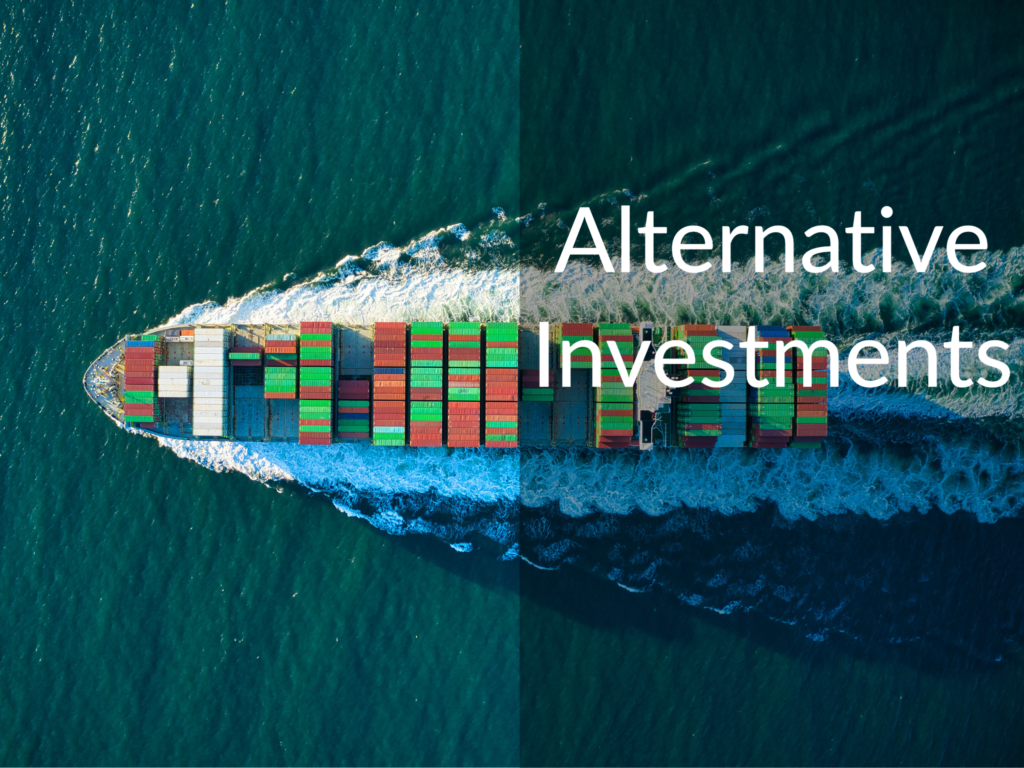How alternative investment opportunities, such as venture capital, private equity, real estate and real assets, are increasing for individuals. Why these opportunities differ from what is available to institutional investors and how to evaluate them like a pro. Alternative investments are a private investment vehicle. You can learn more about investment vehicles in this guide.

Topics covered include:
- What are alternative investments and how are they structured.
- What are 5 factors that determine alternative investment returns.
- Lessons from three recent alternative investment deals including one that defaulted.
- How to evaluate alternative investment opportunities.
Show Notes
YieldStreet Investors Are Learning the Meaning of High Risk by Claire Boston—Bloomberg
Rich-Investor Site Finds Fraud in $89 Million of Ship Debt by Claire Boston and Gillian Tan
251: Impact Investing and Intentionality by David Stein—Money For the Rest of Us
Episode Sponsors
Learn More
251: Impact Investing and Intentionality
Transcript
Welcome to Money for the Rest of Us. This is a personal finance show on money, how it works, how to invest it, and how to live without worrying about it. I’m your host, David Stein. Today is episode 301. It’s titled, “Use Caution with Alternative Investments.”
In 2002–2003, my family and I had recently moved to Idaho. I set up a one-person office. I was still with my institutional investment advisory firm. Our firm had just sold to a bank. I owned a very small percentage, about 2% at the time. I left our executive committee. I was working on developing an asset management platform, but I also agreed to co-found and lead a direct, alternative investment research team at our firm.
Alternative Investments Defined
What are alternative investments? They are investments outside the realm of traditional, publicly available asset classes, like stocks, or bonds, REITs, and cash. Originally, most alternative investments were private opportunities not available to the general public. Usually, they were structured as limited partnerships where there was a general partner selecting the underlying investments.
These limited partnerships have terms typically about 10–12 years or more. The investor commits a certain amount of capital, or money, to the partnership and then the general partners call that money over the next 4–5 years as they identify investment opportunities.
An example of an alternative investment is venture capital, in which a partnership invests in start-up companies. Alternative investments include private equity in which the partnership invests in more established companies, often taking publicly-traded companies private in a leveraged buyout.
Real assets are another category of alternative investment. Real assets include private investments in the energy space, oil and gas, renewable energy. Timber and farmland.
Distressed debt is an alternative investment in which a manager purchases debt of a company nearing bankruptcy with the aim of participating in and profiting from the restructuring of the company after it enters bankruptcy.
There are other private lending strategies that are considered alternative investments. Private real estate can be considered an alternative investment. As are collectibles such as art. It’s a very, very broad category. And there isn’t one specific definition. But generally, private opportunities outside of the traditional public markets.
Fund of Funds
Now prior to 2002 our investment firm only recommended fund-of-funds to our clients. A fund-of-funds is a structure in which the investor commits capital to a limited partnership and then the general partner invests that money in 7 or more other limited partnerships in the alternative investment arena, such as private equity, venture capital, real estate, or real assets.
Fund-of-funds exist so investors can get adequate diversification by participating in hundreds of startup investments, leveraged buyouts, and real asset opportunities. It’s the primary way that I participate in alternative investments. I invest in 4 of the funds that my former investment firm manages. Fund-of-funds exist so investors can get adequate diversification by participating in hundreds of deals, startup investments, leveraged buyouts, real asset opportunities.
If you’re a $50 million endowment, and many of the premier partnerships have minimum investments of $10 million or more, it’s difficult to build out a diversified alternative investment program. And that’s where fund-of-funds can help. Often they have relationships so they can access the premier partnerships, but they also make it easier for the smallest endowments and foundations to participate in the alternative investment class.
In that 2002–2003 period, our investment firm decided that we wanted to be able to, for our larger endowment or foundation clients, recommend specific limited partnerships so they could go direct and take out a layer of fees with the fund-of-funds. We needed to up our game, become even more familiar with alternative investment strategies.
As a Money For the Rest of Us Plus member, you are able to listen to the podcast in an ad-free format and have access to the written transcript for each week’s episode. For listeners with hearing or other impairments that would like access to transcripts please send an email to jd@moneyfortherestofus.com Learn More About Plus Membership »
